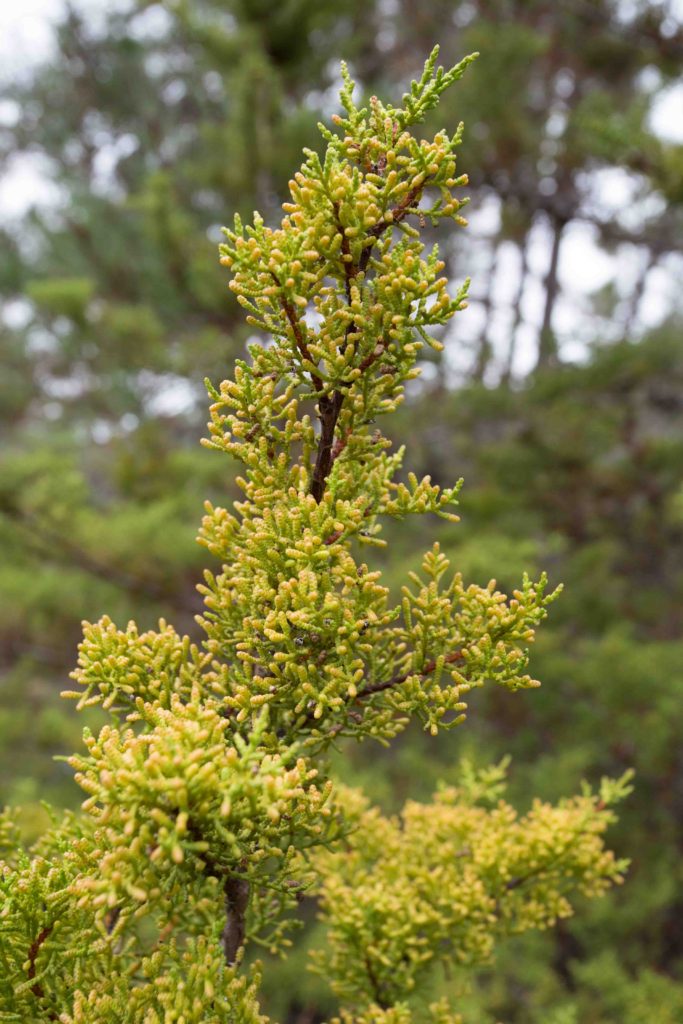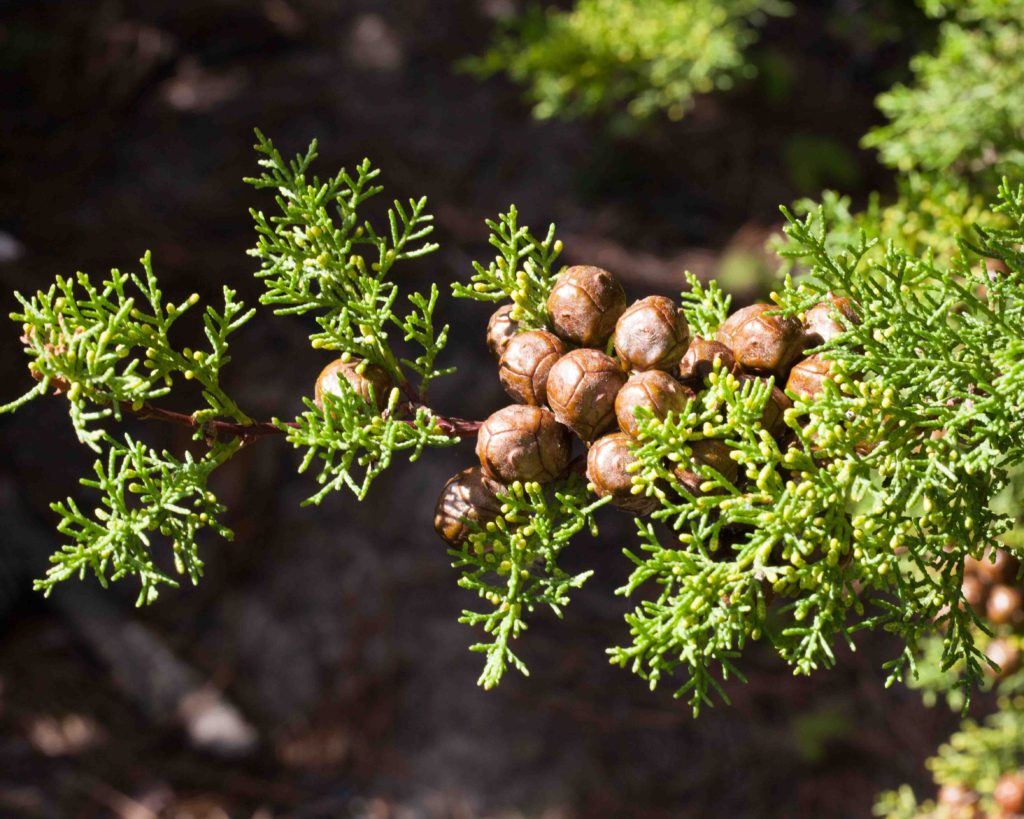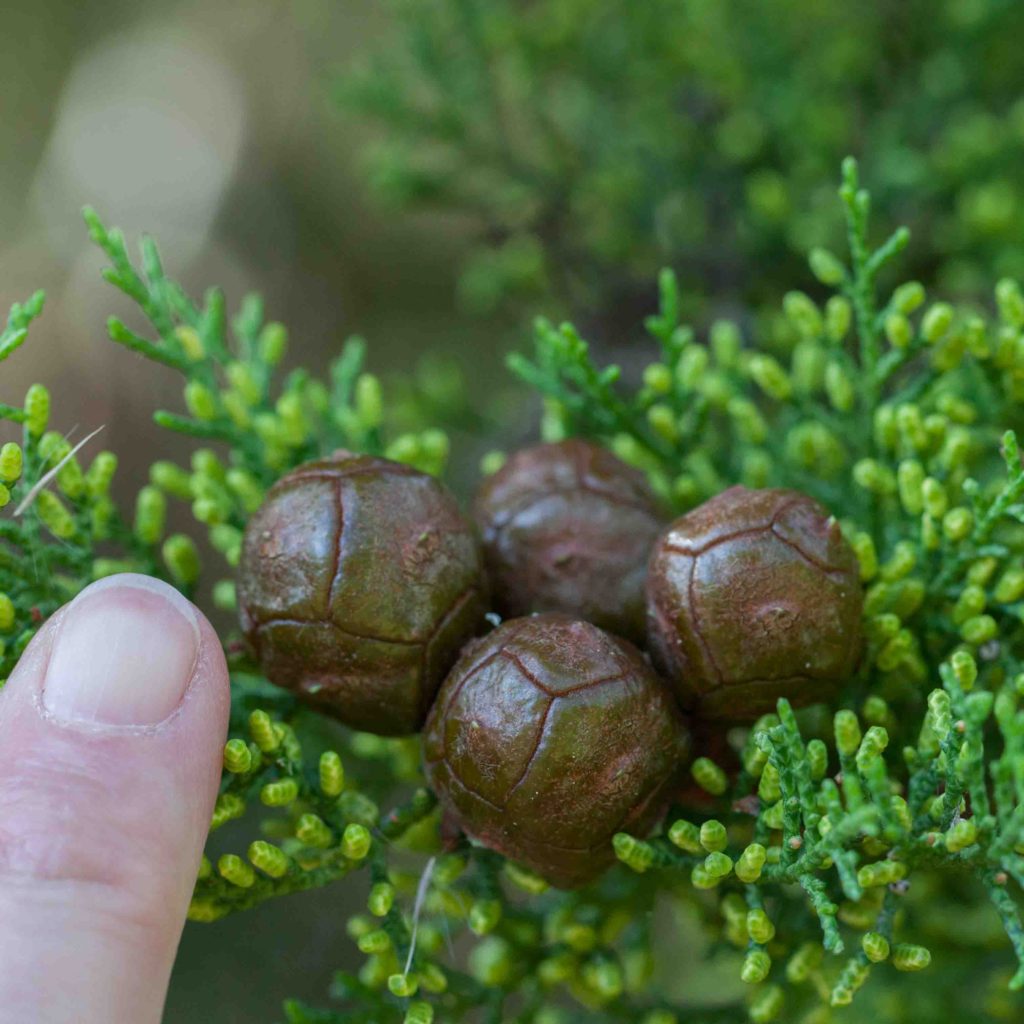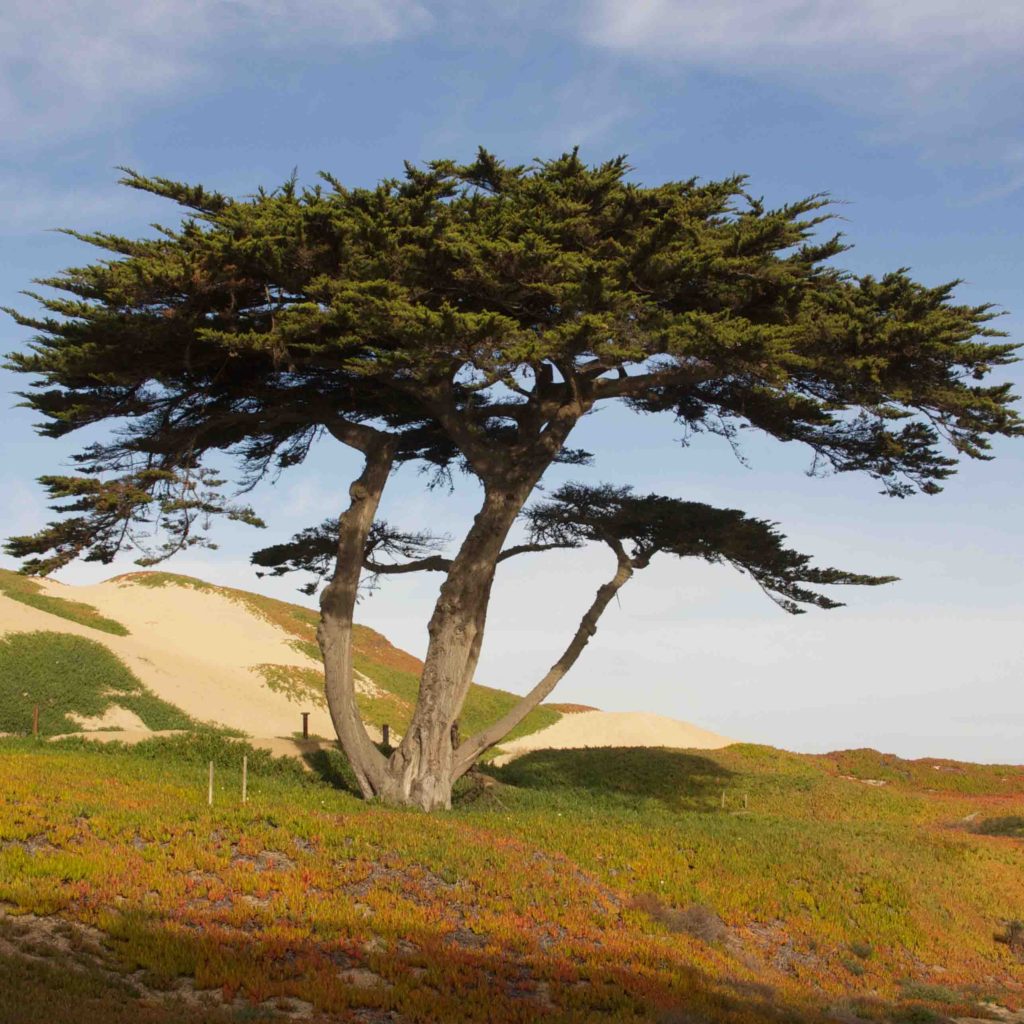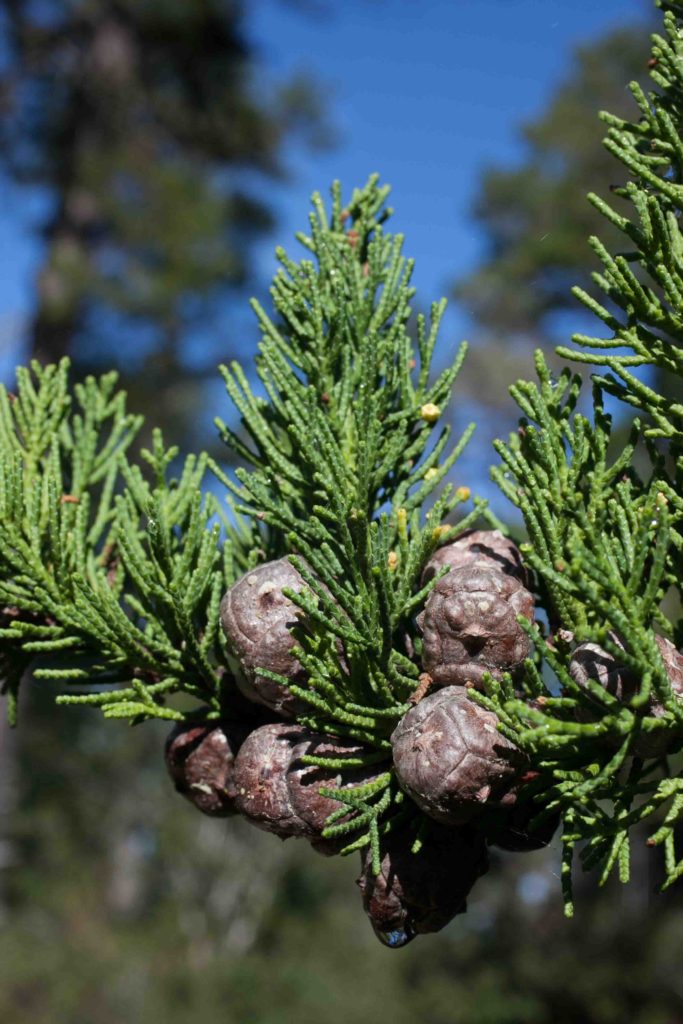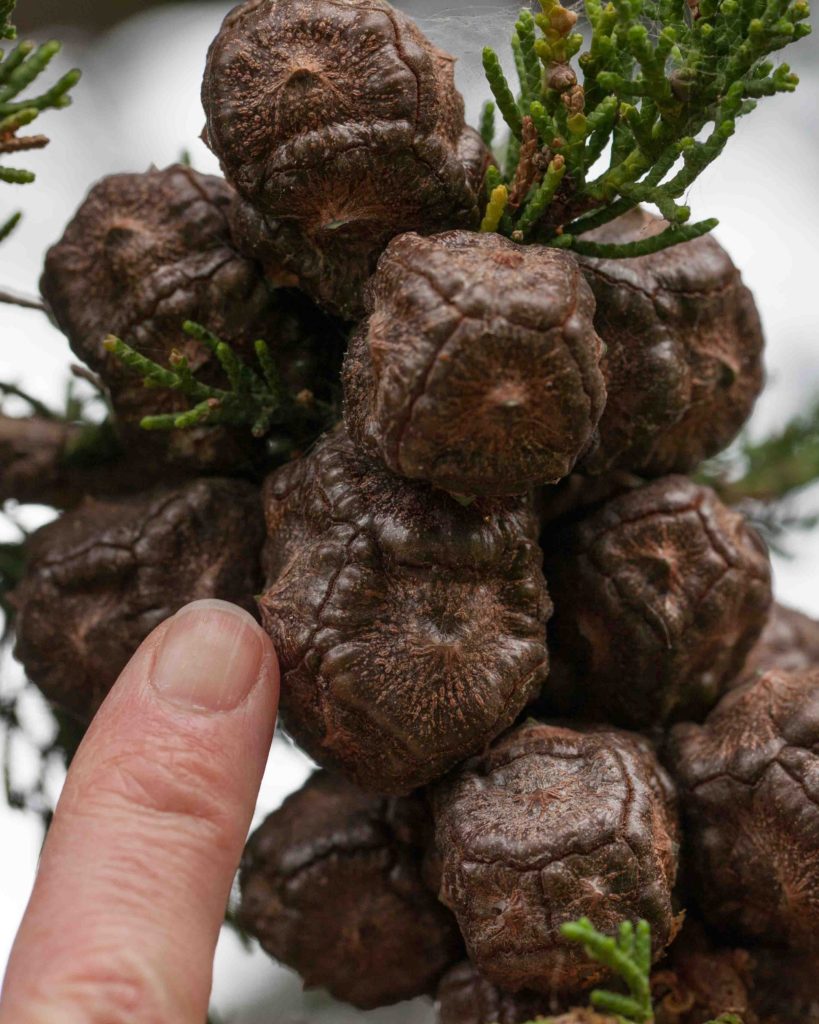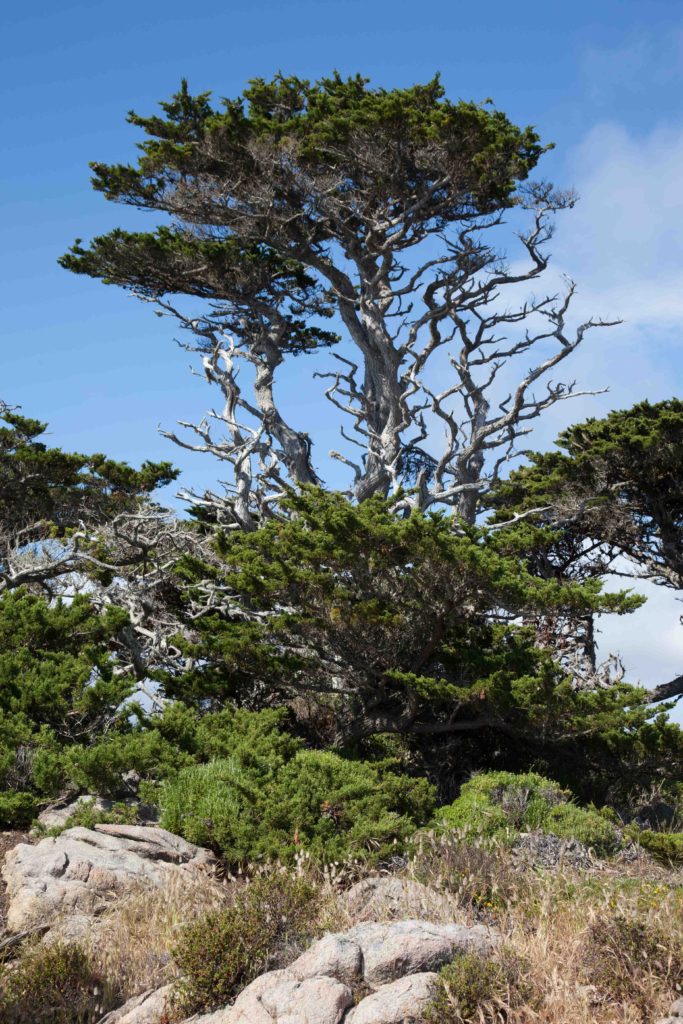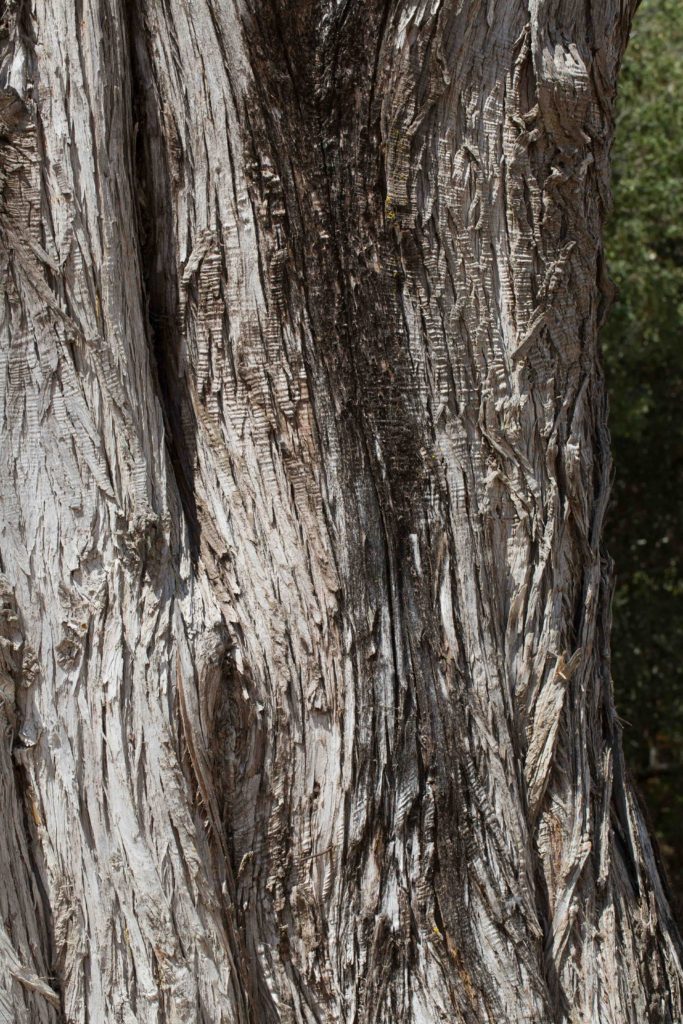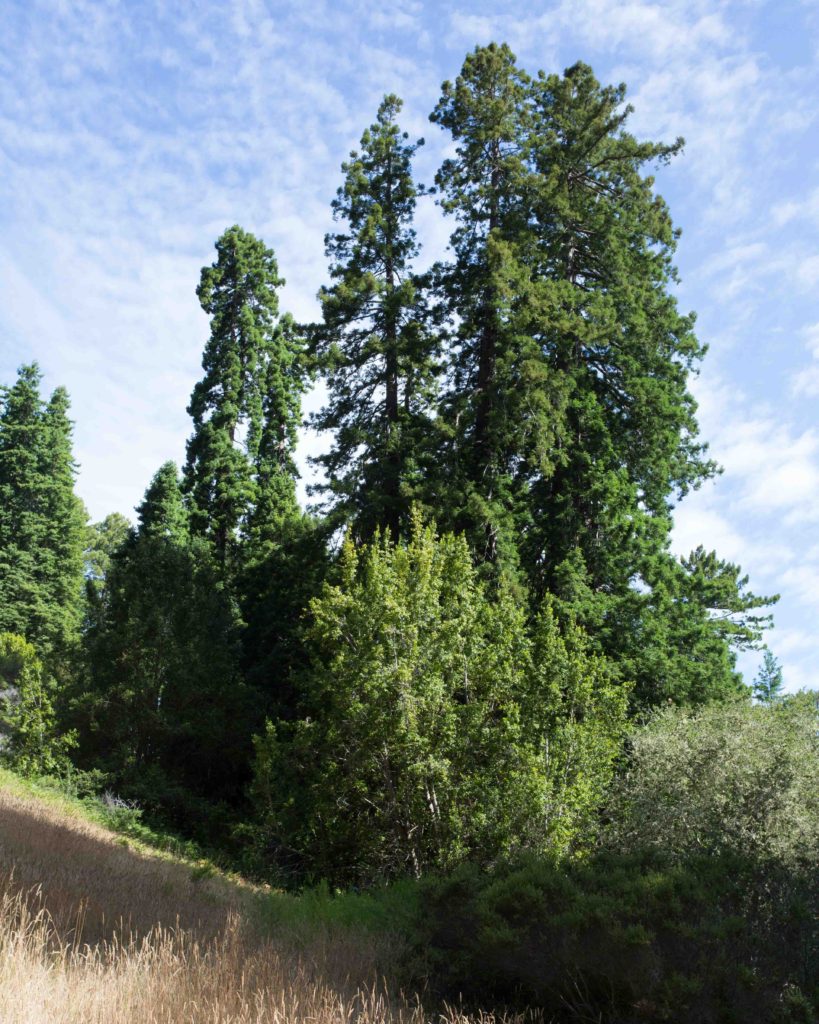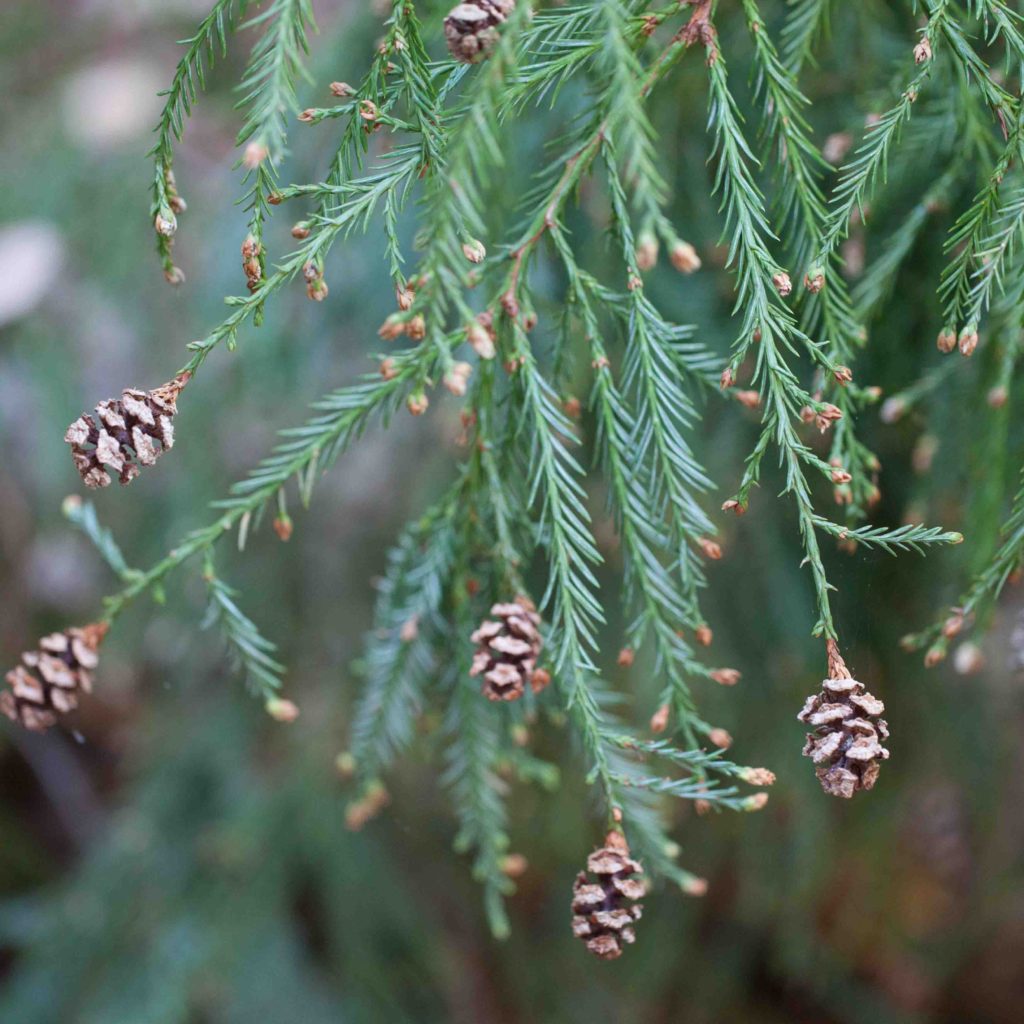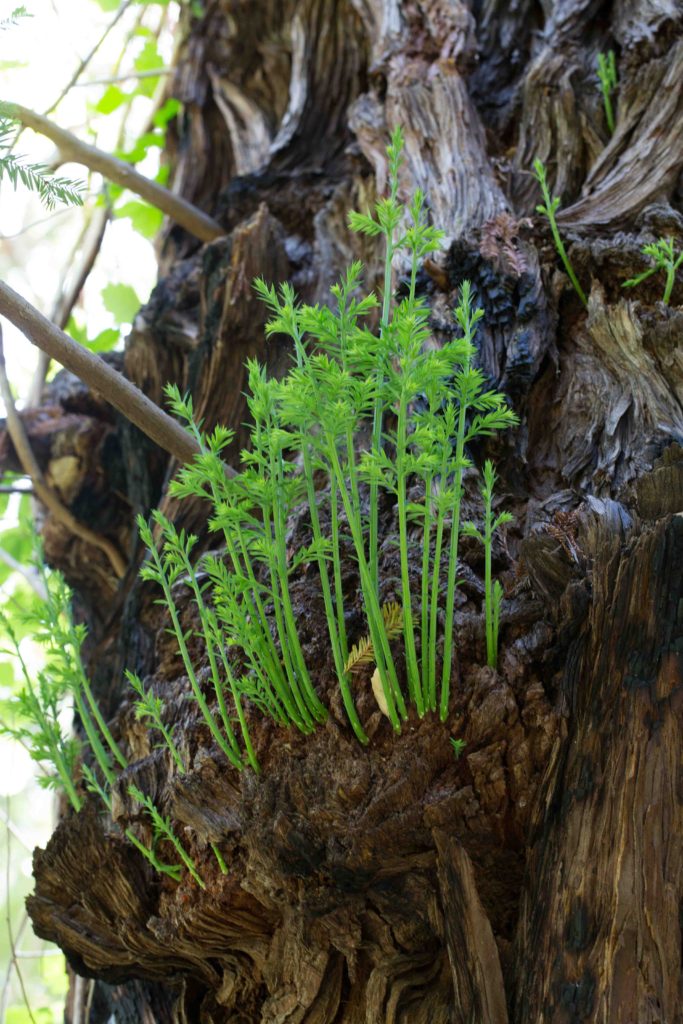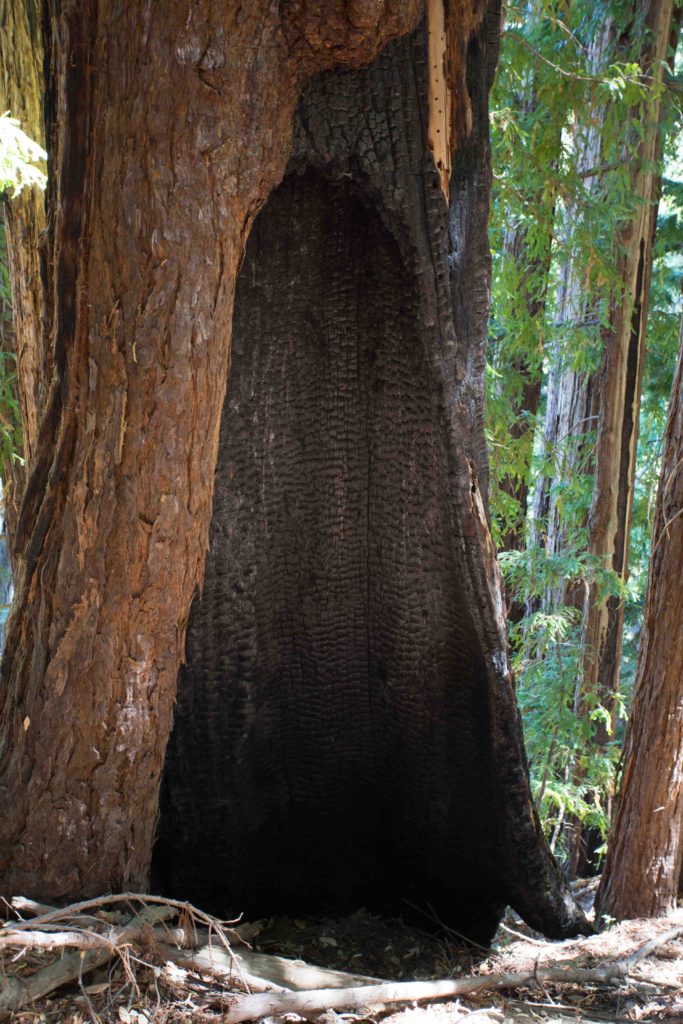Cupressaceae: Cypress Family — Cypress & Redwood
Gowen Cypress – Hesperocyparis goveniana
Height:
5–7 m
Habitat:
Various communities on Monterey Peninsula
Notes:
Like the Monterey Cypress (Hesperocyparis macrocarpa, see below), this is native only on the Monterey Peninsula. Unlike Monterey Cypress, it is not widely cultivated. It is a dwarf form, no more than 7 m tall, with paler, yellowish-green foliage, and much smaller cones (1.5–2 cm in diameter). This is included in the CNPS Rare & Endangered Plants Inventory (1b.2).
Monterey Cypress – Hesperocyparis macrocarpa
Height:
18–25 m
Habitat:
Closed-cone cypress / pine forests
Notes:
This magnificent tree is native only to the Monterey Peninsula and Point Lobos, though widely planted elsewhere. Younger trees usually have a narrow, pointed crown, but when mature they are often widely spreading with flattish, rounded crowns, sometimes dramatically wind-swept. The evergreen leaves are dark blue-green and scale-like. The bark is fibrous, ranging from a rich brown to ash-gray in age. The fruits are distinctive, forming tight, rounded cones with clearly segmented scales which open up with age. The cones are 2–3 cm in diameter. This plant is included in the CNPS Rare & Endangered Plants Inventory (1b.2).
Coast Redwood – Sequoia sempervirens
Height:
50–80 m
Habitat:
Coastal
Notes:
This magnificent tree is less massive than the Giant Sequoia (Sequoiadendron gigantea, not shown), but taller. It is long-lived (1200–1800 years or more), and the tallest of all trees. The short (10–25 mm) bright green leaves are alternate and flat (though leaves near the tops of the tree tend to be closed and scale-like). The cones are absurdly small for a tree of its size, no more than 35 mm in length. The thick, fibrous, reddish bark provides effective protection against forest fires. The trunks frequently have burls, repositories of dormant buds which enable the tree to regenerate asexually (see photo #5). Although wildfires will rarely destroy a Coast Redwood, it may hollow out the base of the trunk to form what are sometimes called “goosepens” (places where settlers in earlier times were able to corral their livestock). Monterey County is the southern end of this tree’s range. Further south, there isn’t enough summer fog.

